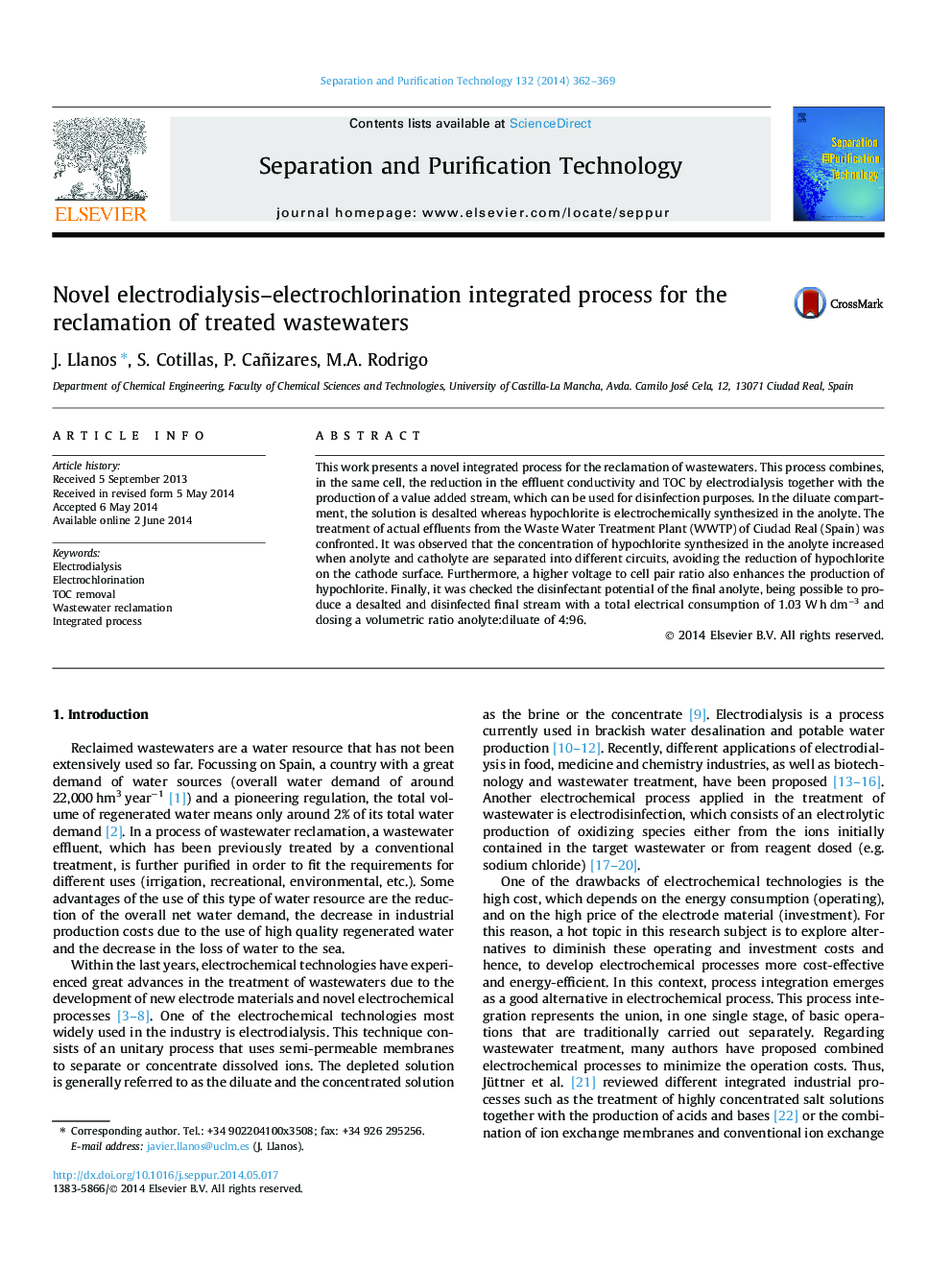| Article ID | Journal | Published Year | Pages | File Type |
|---|---|---|---|---|
| 641030 | Separation and Purification Technology | 2014 | 8 Pages |
•Effluent desalination, TOC removal and production of hypochlorite solution in an integrated cell.•Separation of catholyte and anolyte and enhances the production of hypochlorite.•Higher values of voltage per cell pair increase the rate of hypochlorite production.•Anolyte dosing as low as 4:96 (volumetric ratio) disinfects the final diluate.
This work presents a novel integrated process for the reclamation of wastewaters. This process combines, in the same cell, the reduction in the effluent conductivity and TOC by electrodialysis together with the production of a value added stream, which can be used for disinfection purposes. In the diluate compartment, the solution is desalted whereas hypochlorite is electrochemically synthesized in the anolyte. The treatment of actual effluents from the Waste Water Treatment Plant (WWTP) of Ciudad Real (Spain) was confronted. It was observed that the concentration of hypochlorite synthesized in the anolyte increased when anolyte and catholyte are separated into different circuits, avoiding the reduction of hypochlorite on the cathode surface. Furthermore, a higher voltage to cell pair ratio also enhances the production of hypochlorite. Finally, it was checked the disinfectant potential of the final anolyte, being possible to produce a desalted and disinfected final stream with a total electrical consumption of 1.03 W h dm−3 and dosing a volumetric ratio anolyte:diluate of 4:96.
Graphical abstractFigure optionsDownload full-size imageDownload as PowerPoint slide
